The Final “Complete PCT Gear List”
Note: I have since written an updated version of the ideal PCT gear list.
Check it out here: The Ultimate Pacific Crest Trail Packing List.
I know, my pride got the better of me. I thought I knew better than everyone else and that I could be different out on the trail.
Unfortunately, once again, I was wrong.
As my trip down the Pacific Crest Trail progressed, I found myself getting rid of more and more gear. Sometimes because I wasn’t using it enough, and sometimes because I finally decided to compromise on my luxuries. My original gear list ended up containing significantly more than what I finished with.
OSPREY ATMOS 65
PROS: Osprey AirSpeed ventilated, bottom access zipper, comfortable fit (even when fully loaded), hood with two pockets
CONS: on the heavier side, front pocket zippers prone to breakage when fully loaded
WEIGHT: 57 oz / 1.61 kg
MSRP: $240 US
WOULD USE AGAIN? Most Likely
Link: Osprey Atmos 65
Read my detailed Osprey Atmos 65 review here.
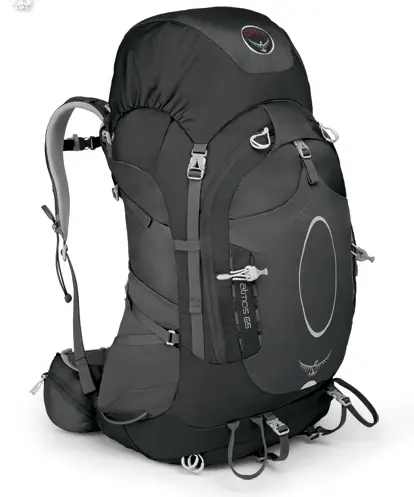
MOUNTAIN HARDWEAR SUPERMEGAUL 1*
PROS: Lightweight, easy setup/breakdown, freestanding, mesh pocket
CONS: Not ideal for camping in the rain, included stakes are not very tough, expensive
WEIGHT: 31.8 oz / 902 g
MSRP: $350 US
WOULD USE AGAIN? Yes
*The SuperMegaUL 1 has been replaced by Mountain Hardwear with the Ghost UL 1.
Read my detailed SuperMegaUL 1 review here.
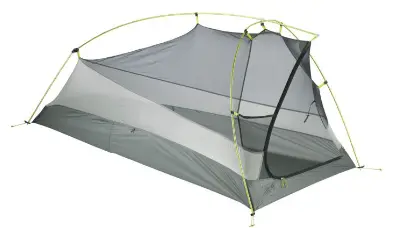
MOUNTAIN HARDWEAR PHANTOM 15
PROS: Incredibly warm and compressible 800-fill down, lightweight, plenty of wiggle room, built-in pocket, dries very quickly (moisture due to condensation, not submersion)
CONS: Expensive
WEIGHT: 33 oz / 936 g
MSRP: $500 US
WOULD USE AGAIN? Absolutely
Read my detailed review of Mountain Hardwear’s Phantom 15 sleeping bag here.
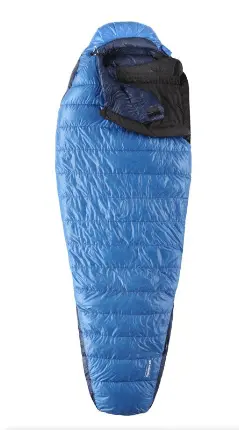
THERM-A-REST Z LITE SOL
PROS: Inexpensive, comfortable, room enough to lay flat, versatile (as a quick mat or water sliding device)
CONS: Heavy and bulky when compared to blow-up pads, noticeably flattens out over time
WEIGHT: 14.5 oz / 411 g
MSRP: $45 US
WOULD USE AGAIN? Most Likely
Link: Therm-a-Rest Z Lite SOL Sleeping Pad
Read more about the Z Lite Sol and choosing a sleeping pad here.

NEW BALANCE 889 TRAIL RUNNERS*
PROS: Comfortable, wide, durable (wore out three pairs on the hike – the fourth pair has life left in it still)
CONS: The insoles are not very good, I would recommend Superfeet as replacements
WEIGHT: 12 oz
MSRP: $85 US
WOULD USE AGAIN? Yes
*These shoes have been discontinued, I now use the Merrell Moab Ventilator
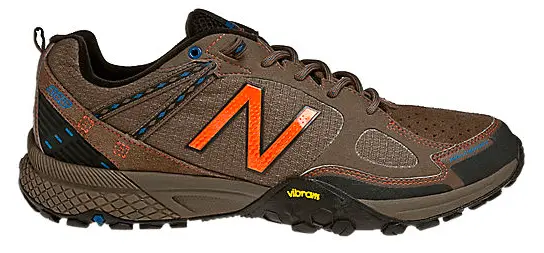
SUPERFEET GREEN PREMIUM INSOLES
PROS: I got these at the same time as my Darn Toughs, but I loved the support that they offered.
CONS: They wear out, just like the shoes. I used two pairs over the course of the trail.
WEIGHT: 12.8 oz
MSRP: $40
WOULD USE AGAIN? Absolutely
Link: Superfeet Green Premium Insoles
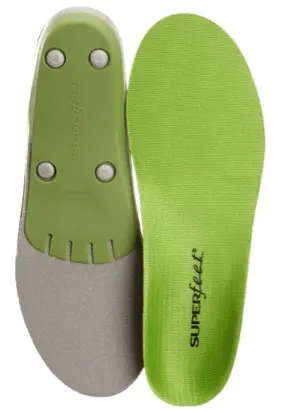
BLACK DIAMOND ALPINE ERGO CORK
PROS: Cork grip prevented hands from becoming filthy (as happens with rubber grips), easily adjustable, locks never failed under stress
CONS: Never used for going downhill, I think I prefer poles with shocks (more fun to lean into whilst stopped)
WEIGHT: 19.9 oz
MSRP: $140 US
WOULD USE AGAIN? Yes
Link: Black Diamond Alpine Ergo Cork Trekking Poles
For more on trekking poles, check out: Trekking Poles – Why?

COLUMBIA OMNI-FREEZE SHIRT
PROS: Comfortable, lightweight, quick-drying, convertible sleeves
CONS: Columbia’s “omni-freeze” gimmick does not actually keep you cooler in my opinion, eventually my pack wore holes in the back of the shirt, expensive for what it is
WEIGHT: 9.6 oz
MSRP: $95 US
WOULD USE AGAIN? Yes
Link: Columbia Freeze Degree Long Sleeve Shirt
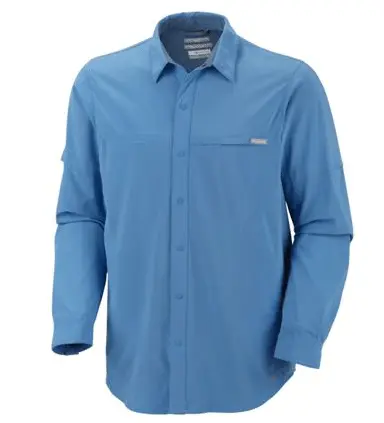
MOUNTAIN HARDWEAR GHOST WHISPERER
PROS: Awesome jacket – incredibly warm, lightweight, and compressible (and works wonders as a pillow), waistband drawstring, elastic cuffs, and turtleneck ensure maximum warmth
CONS: Mountain Hardwear’s sizing is not the best, expensive
WEIGHT/MSRP: 7.2 oz
MSRP: $300 US
WOULD USE AGAIN? Absolutely
Link: Mountain Hardwear Ghost Whisperer
Read my detailed Ghost Whisperer review here.

COLUMBIA COMPOUNDER II SHELL
PROS: Waterproof, plenty of pockets (including a large inside pocket and chest pocket), comfortable
CONS: If you are hiking with your pack on through the rain with this jacket, even with the vents, all of your clothing underneath will still become wet/damp due to condensation and sweat (and yes, even if you have the pit-zips fully opened), expensive, heavy, could not get into outside pockets with my pack’s hip-belt buckled
WEIGHT: 14.7 oz
MSRP: $300 US
WOULD USE AGAIN? Maybe
Link: Columbia Compounder II Shell
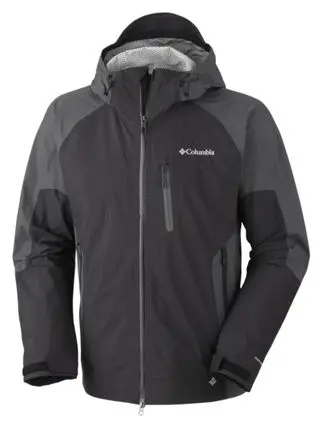
COLUMBIA HYDROTECH RAIN PANTS
PROS: Waterproof, comfortable, packs into its own pocket, zippers allow them to be rolled up
CONS: Not breathable, you will become incredibly sweaty in them, one size
WEIGHT: 8.9 oz
MSRP: $90
WOULD USE AGAIN? Yes
Link: Columbia HydroTech Rain Pants
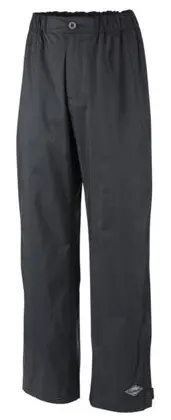
UNDER ARMOR 9″ COMPRESSION SHORTS
PROS: Comfortable, effective at preventing thigh-chafe, rarely began to smell
CONS: The inside seam on one pair eventually tore, but they were still usable
WEIGHT: 4 oz
MSRP: $30 US
WOULD USE AGAIN? Absolutely
Link: Under Armour HeatGear Sonic Compression Shorts
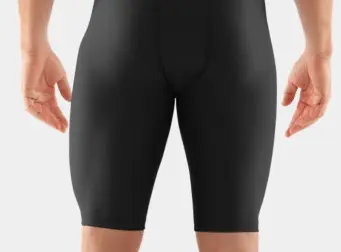
DARN TOUGH 1/4 HIKING SOCKS
PROS: Comfortable, wool, lifetime guarantee, great cushion
CONS: You will never want to buy another brand of socks
WEIGHT: 7.2 oz
MSRP: $20 US
WOULD USE AGAIN? Absolutely
Link: Darn Tough 1/4 Hiking Socks
Read my detailed Darn Tough Sock review here.
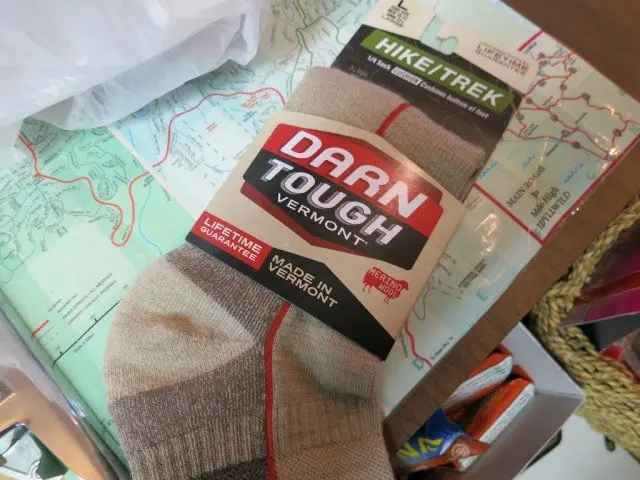
MOUNTAIN HARDWEAR DOME PERIGNON
PROS: Comfortable, warm, can be worn to make you look like an elf or down around the head and ears
CONS: Mountain Hardwear is terrible at sizing their products (try before you buy), significantly muffles your hearing
WEIGHT: 2 oz
MSRP: $25 US
WOULD USE AGAIN? Yes
Link: Mountain Hardwear Dome Perignon
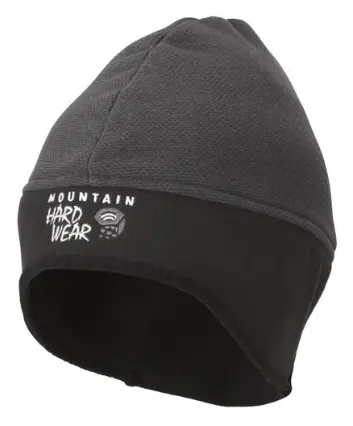
PLATYPUS WATER BOTTLE
PROS: Packable, durable, usable with a pop-top or hose, BPA free
CONS: Make sure you keep them clean, one of my bottles got moldy
WEIGHT: 1.6 oz
MSRP: $17 US
WOULD USE AGAIN? Yes
Link: Platypus plusBottle
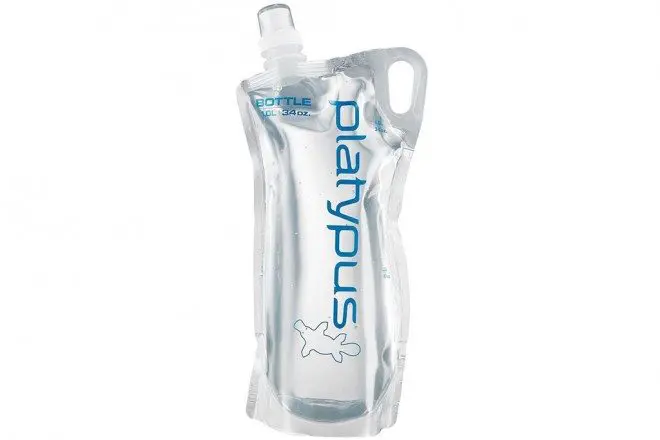
CAMELBAK ALL CLEARWATER PURIFIER
PROS: Incredibly convenient, can walk and filter at the same time, rechargeable, long battery life
CONS: Very heavy (relative to other purifiers), can only filter 0.75 liters at a time, can be difficult to fill from some sources, following the trail I dropped it on cement and cracked the bulb
WEIGHT: 14 oz
MSRP: $100 US
WOULD USE AGAIN? Most Likely
Link: CamelBak All Clear
Read my detailed CamelBak All Clear review here.
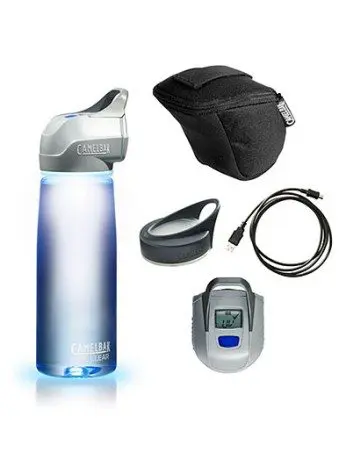
GOAL ZERO NOMAD 7 SOLAR PANEL
PROS: Charges quickly in direct sunlight, no battery pack needed, can be attached to pack, USB port, pocket
CONS: Heavy, not the best in cloudy conditions, newer version has cords already attached
WEIGHT: 16.5 oz
MSRP: $150 US
WOULD USE AGAIN? Maybe
Link: Goal Zero Nomad 7 Solar Panel

BLACK DIAMOND STORM HEADLAMP
PROS: Small, bright enough to set up and move about camp, three modes (spotlight, flood, red light), strobe setting
CONS: Prone to turning on inside pack, not great for hiking at night, eats batteries quickly, claims to be a regulated output (I doubt this very much)
WEIGHT: 3.9 oz
MSRP: $50 US
WOULD USE AGAIN? Probably Not (would get something brighter)
Link: Black Diamond Storm
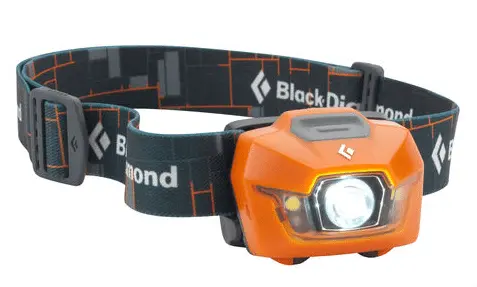
CANON S100
PROS: Excellent photo quality, lightweight, decent optical zoom, shoots video, excellent battery life
CONS: Prone to malfunctioning in cold temperatures or in the rain (as I would expect), cannot recharge via USB
WEIGHT: 6.1 oz / 173 g
MSRP: $430 US
WOULD USE AGAIN? Absolutely
Note: The S100 has been replaced by the S120 (which I have yet to use).
Link: Canon PowerShot S120
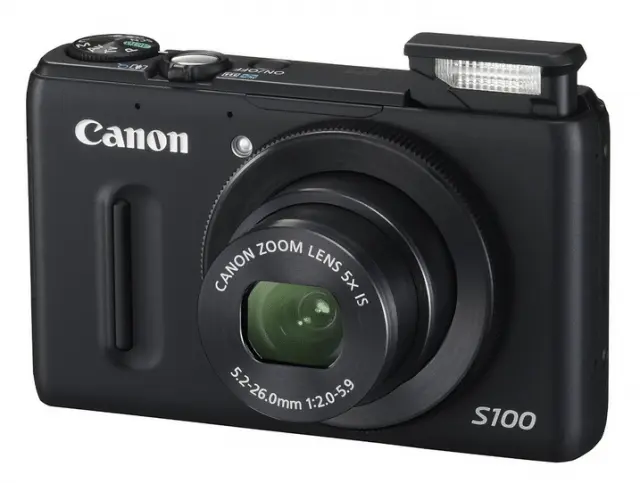
GEAR SENT HOME
The following is a list of gear I sent home after finally realizing that I did not need it (and trust me, even if you don’t think so now, you are in fact bringing too much gear, and you will end up getting rid of a significant amount – I was just as ignorant/arrogant).
Aquamira Water Treatment Drops
WHY? Except for the two times my SteriPen broke, the Aquamira drops were useless. If you really need backup filtration you can always ask other hikers.
Link: Aquamira Water Treatment Drops
Platypus Big Zip SL 3.0L Reservoir
WHY? After the desert carrying more than two liters of water at a time became silly (and incredibly heavy) – this was simply no longer needed.
Link: Platypus Big Zip 3L
28-T Mini Trangia, Titanium Cook N Save Pot, Fuel Bottle
WHY? It took until Crater Lake, but I finally decided to ditch my cooking supplies. Cooking took too long, the equipment weighed too much, and the food wasn’t worth the effort. Stoveless FTW.
Link: Trangia 28-T Mini Trangia, Snow Peak Titanium Cook N Save Pot
Joby Gorillapod, Pocket XShot, Camera Remote
WHY? For the same reasons listed above, you will not need all the “fancy” camera equipment you thought would be a good idea. Leave it behind and get your ass hiking.
Link: Joby Gorillapod, XShot Camera Extender
Speaker (Kinivo ZX100 Mini)
WHY? I rather enjoyed having my small speaker along on the trial, but eventually, the trail finally claimed it, and I chose not to get another. Guess what? I survived just fine without it. Leave it at home.
Link: Kinivo ZX100 Mini Portable Speaker
UCO Windproof and Waterproof Survival Matches
WHY? Don’t kid yourself. You are not going to be in a position where lighting a fire is the difference between life and death. Forget your backup fire starter at home.
Link: Windproof and Waterproof Survival Matches

Suunto M-3D Leader Compass
WHY? Again, don’t kid yourself. The trail is very well-marked (for the most part), and unless you are venturing into some incredible snow (in which case you should have a GPS because you will not be able to see the trail), then you will not need a compass.
Link: Suunto M-3DL Compass
Marmot DriClime Windshirt
WHY? I rather liked the Windshirt by Marmot, but I really did not need a layer “slightly less warm” than my down jacket. If it is cold, wear your down. If it isn’t, then deal with it.
Link: Marmot Driclime Windshirt
Bodyglide Anti-Chafe 0.45 oz
WHY? There are a few truths you will learn on the trail, one of them? The only thing that can cure ass-chafe is sleep – this product only serves to take up space in your pack.
Link: Bodyglide Anti-Chafe Balm
GoPro Hero 3 Black
WHY? First thru-hike? You are going to be far too exhausted to record the epic documentary you planned on making. Just focus on hiking your miles and making to most of your hike. Leave the extravagance behind.
Link: GoPro
Dr. Bronner 2 oz Peppermint Soap
WHY? I don’t know who I was kidding, you do not need soap. If you are in a position to take a shower, then soap will be available to you (and water should be enough) – leave the soap at home, friends.
Link: Dr. Bronner’s Liquid Soap
Bug Repellant
WHY? Bug repellant does not work – truth. If you want to stop bugs, wear long sleeves/pants and get inside an enclosed shelter. DEET won’t help you.
Sunscreen
WHY? Once you get out of the desert, the sun ceases to be an issue. Sunscreen should probably be used on a daily basis, but since I stopped burning, I stopped applying/carrying the stuff.
Long Underwear (Bottoms and Top)
WHY? I tried using my long underwear in the beginning, but it turned out that I really did not need it. If it is cold at night, then get in your sleeping bag. You may need these layers if you hit snow in Washington, but with this exception, you should be fine sleeping in your down should it come down to it.
Gaiters
WHY? I tried using Mountain Hardwear gaiters until I realized that I did not have the equipment to properly attach them to my shoes, and then I tried Dirty Girls until they became too riddled with holes to do any good. Ultimately I ended up with no gaiters, and I was perfectly fine.
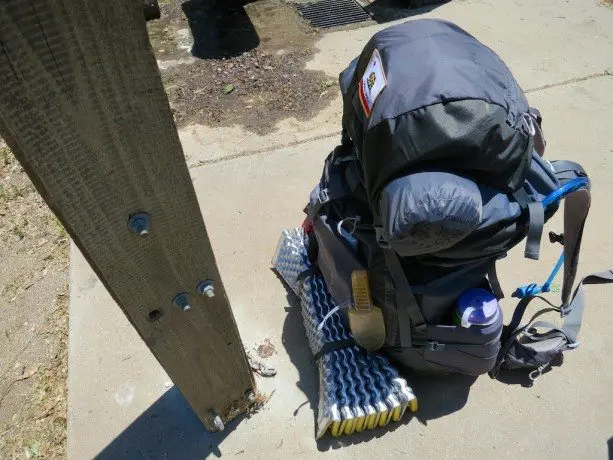
GEAR CHANGED OUT
Despite all my research and all my planning, I still found that my gear was sometimes not exactly what I needed out on the trail.
ADDED: Sea to Summit 13L Dry Sack | DROPPED: Sea to Summit 15L Compression Sack
WHY? Did not want to/did not need to be compressing the down in my sleeping bag every day, and saved a bit of weight by losing the compression sack.
Link: Sea to Summit eVAC Dry Sack
ADDED: CamelBak All Clear | DROPPED: SteriPen Ultra
WHY? Not one but two SteriPens malfunctioned on me, and upon reaching Mammoth Lakes, California I was sick of their bullshit – the CamelBak All Clear was a bit heavier but incredibly convenient (I could hike and filter at the same time), and reliable.
Link: Camelbak All Clear Bottle
ADDED: Darn Tough Hike/Trek Socks | DROPPED: KEEN Olympus Crew Socks
WHY? As discussed before, the KEEN socks were garbage, and the Darn Toughs were fantastic.
Link: Darn Tough Hike/Trek Socks
ADDED: REI Safari Convertible Pants | DROPPED: Mountain Hardwear Portino Convertible Pant
WHY? The Mountain Hardwear pants experienced major ripping in the crotchal region and the REI pants were the most readily available (which ultimately also experienced similar crotchal ripping).
Link: REI Safari Convertible Pants
ADDED: Double Mountain Flex Fit Hat | DROPPED: Outdoor Research Transit Sun Hat
WHY? Got sick of the sun hat once the sun stopped being a factor – opted for something more my style.
The Final Word
No matter what, you will end up making changes to your gear.
Whether equipment breaks, does not work the way you expected, or just becomes useless over time, expect that your pack at the end of your PCT hike may be surprisingly different from the pack you started with.
Questions about my gear choices or anything said here? Leave a comment below and I will do my best to address any questions.
Disclosure: Your trust is important to me and that’s why I only recommend products I love and personally use. This page contains affiliate links which means at no additional cost to you, I may receive small commissions for purchases made via these links. This helps keep the site up and running.
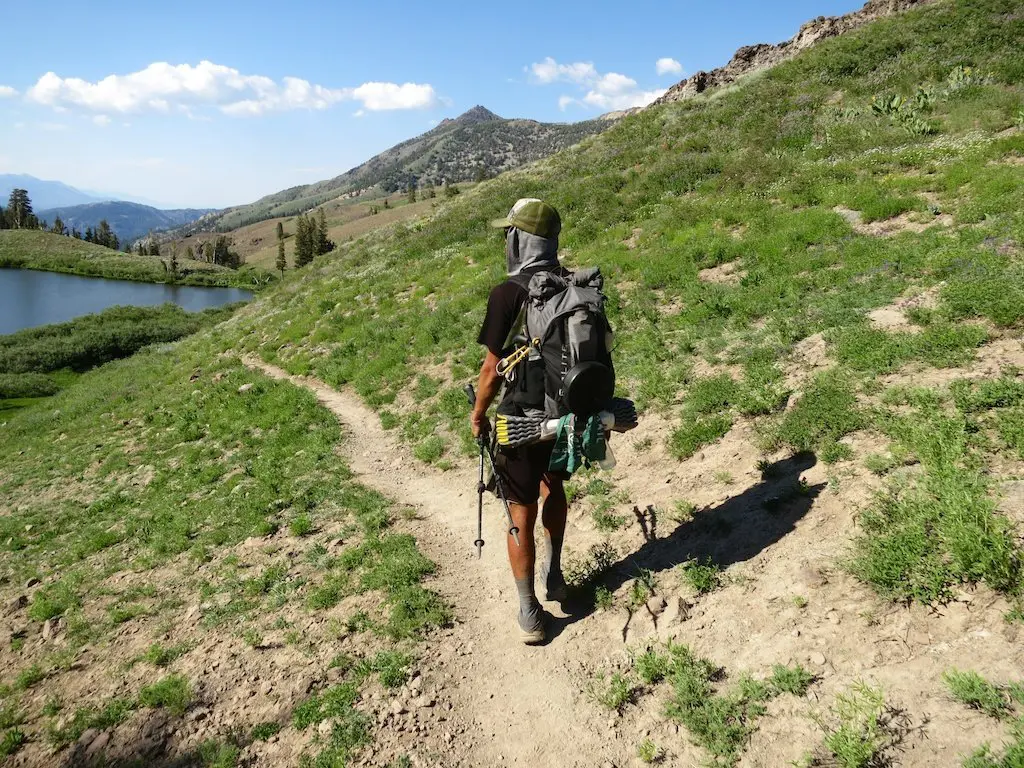


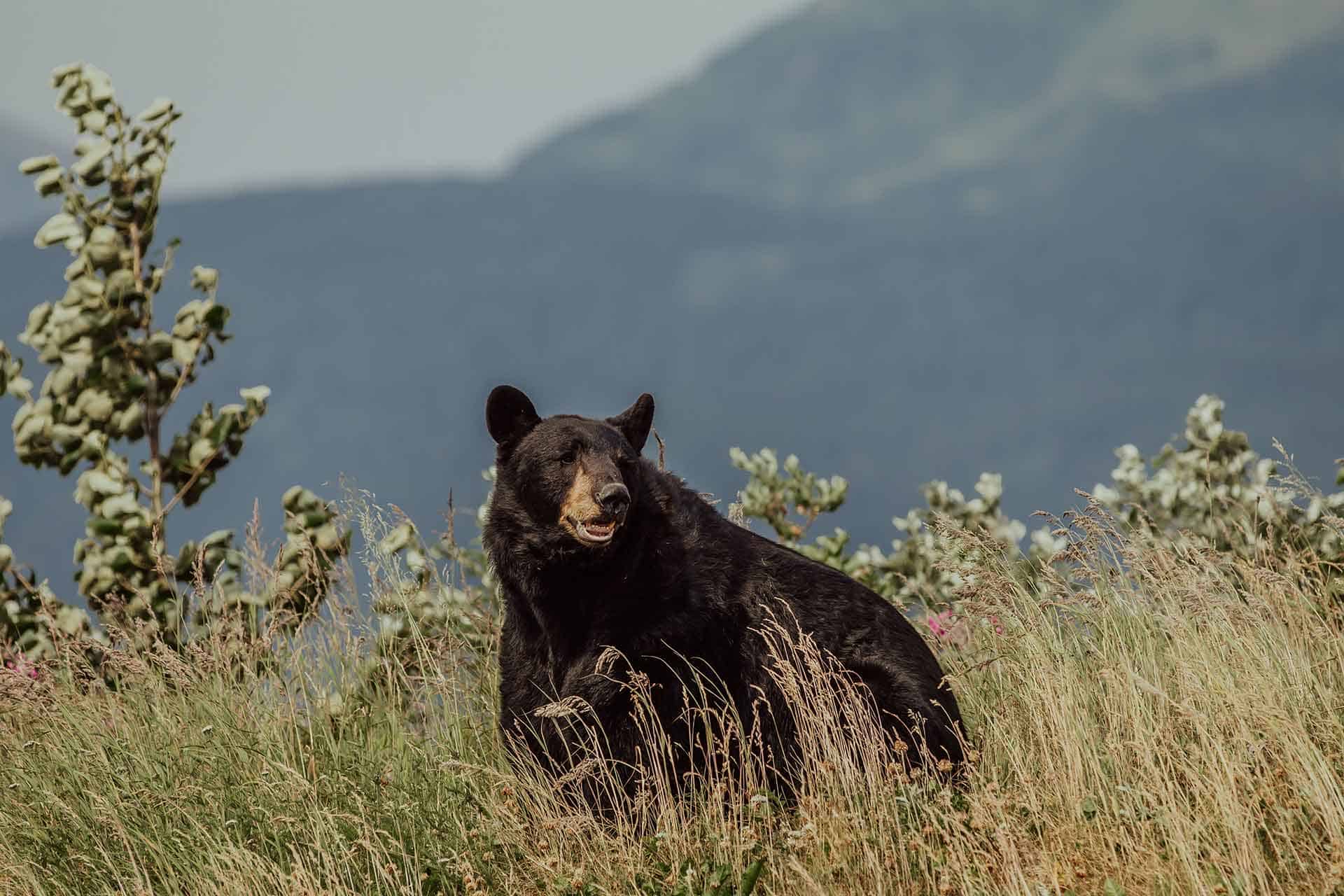

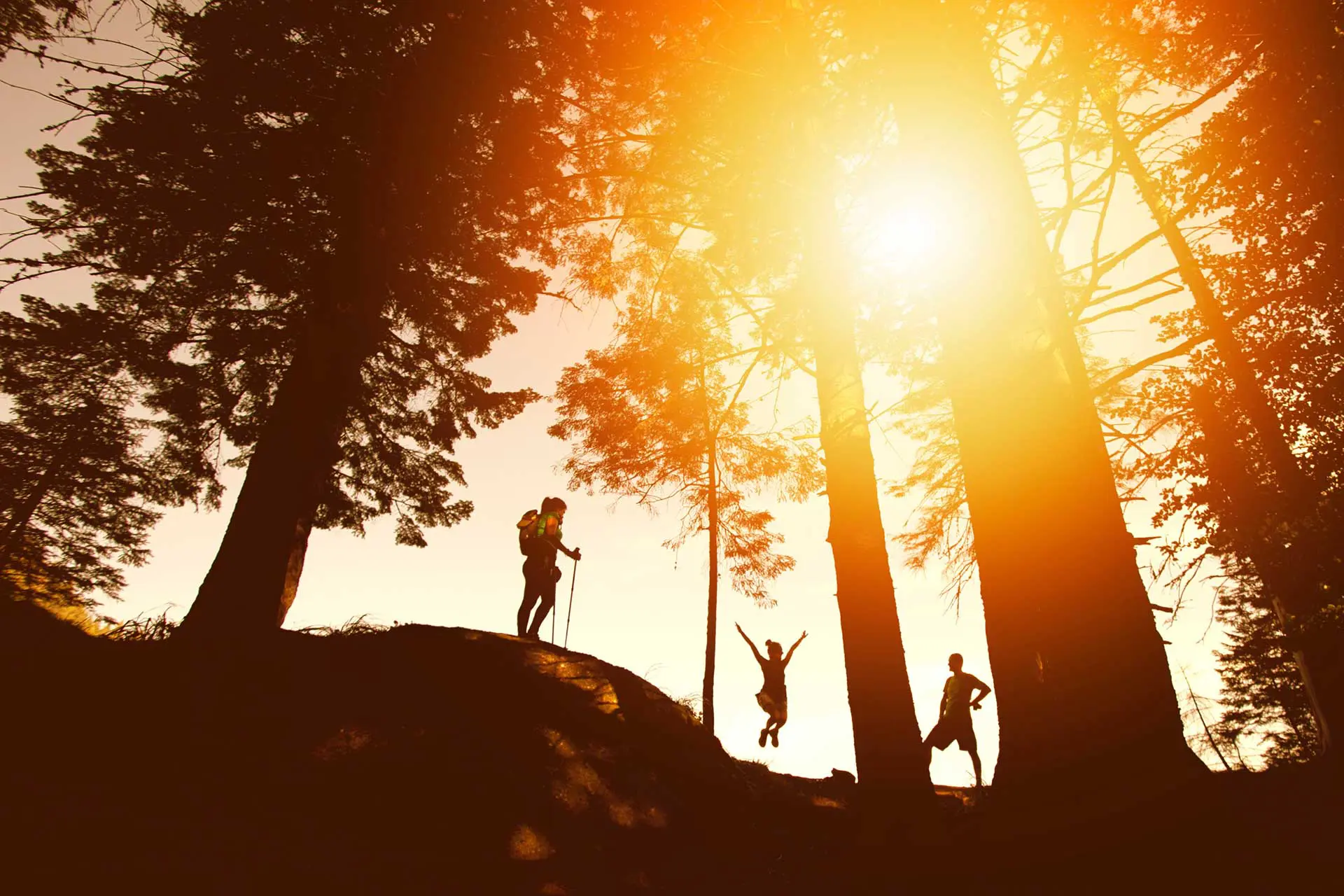
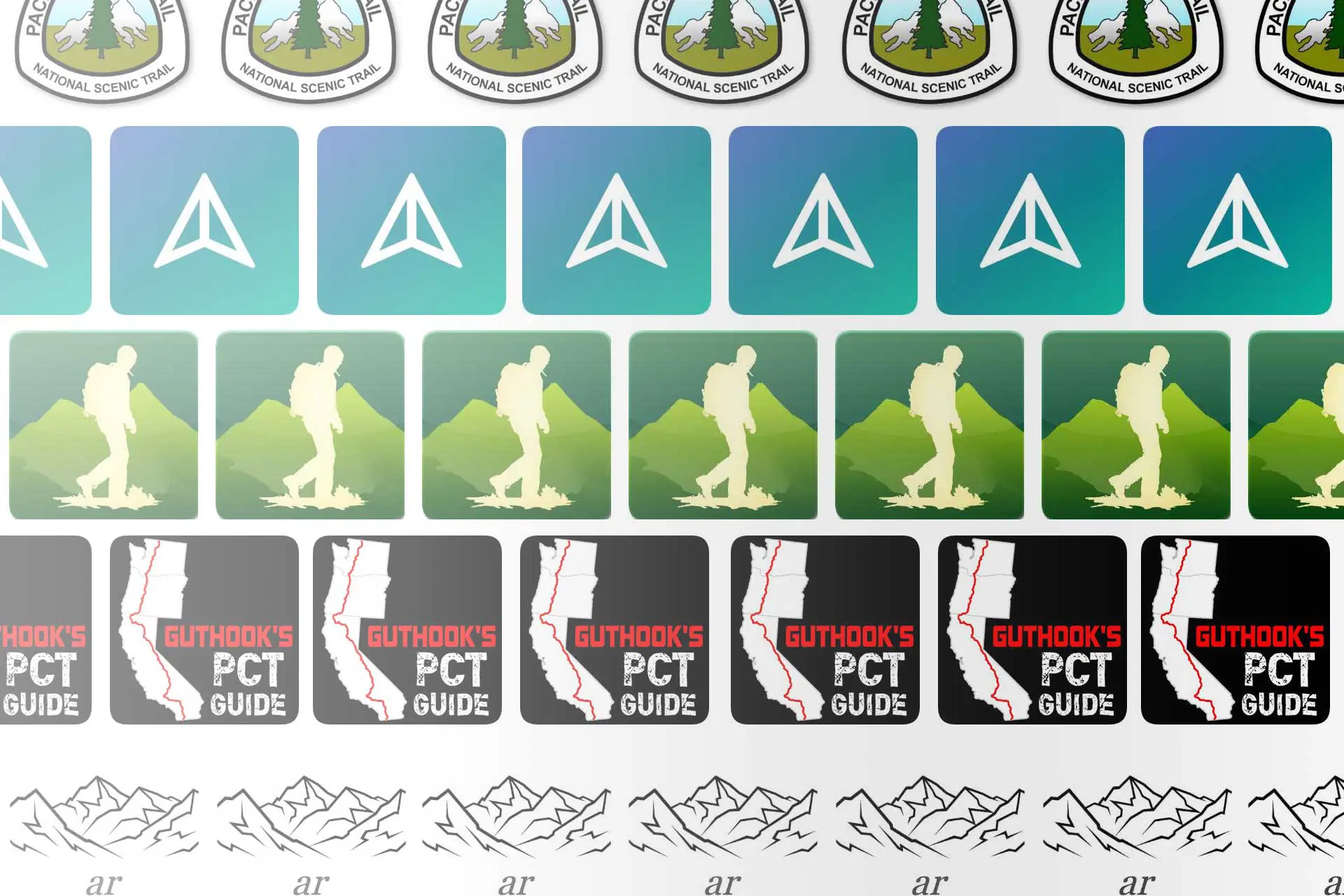
i would rather have soap then hand sanitizer, you can wash your hands and pot. it’s been proven time and time again washing is better than sanitizer….
Unfortunately, you don’t always have the luxury of access to water when you need to clean your hands in the backcountry.
I would love of you could send the spreadsheet to me aswell? I would really appreciate it. [email protected]
You can access it at the following link: https://goo.gl/ydsso9
If possible can you email me the spreadsheet? Would really love to be able to print it and take a better look at it. Thanks! [email protected]
Here’s the link! https://goo.gl/ydsso9
Great list, thanks! How are the possibilities of buying new outdoor gear (shoes, clothes) in towns along the trail?
Bjorn
There are plenty of small gear shops in towns along the trail that you can buy equipment in (shoes may be more difficult). But if you order from REI then you can have things delivered to you along the trail at resupply stops.
I’m currently planning on hiking the entire Washington PCT section and was hoping to get some more info from you about gear, and food! We will be hiking in the summer but we still expect to run into snow. Any info you could share with me would be amazing! My email is [email protected].
What trowel did you use?
Ditched my trowel after a couple weeks. Use a rock, your trekking poles, or your heel instead.
Would you be able to email your spreadsheet. I want to do the through hike in 2017 and am starting to buy my gear. Your list is the best I’ve seen.
Sure, send me an email at mac[at]halfwayanywhere.com and I will get back to you.
Awesome post did you need an sun reflective umbrella at all?
I did not use one, but plenty of people do.
Darn toughs. What level of cushion did you get?
I found the cushion to be fine. I used these: http://amzn.to/1UKhc9e
Hi, I love your blog. I’m about to do the PCT Thru hike in a year. I was wondering if you think you could’ve gone through with a smaller bag? I was thinking about taking a Osprey Exos 58L. Also, did you bring anything to defend yourself in case of a bear attack?
I for sure could have done it with a smaller bag. I have the Exos 58 right now and I love it (although I would check out the Atmos AG 50 as well: http://amzn.to/1Po1zh5)
I carried nothing but my fists to protect me from bears, because if I’m going to fight a bear, it’s going to be a fair fight.
Nothing like the voice of experience! Can you clarify the cumulative weights for me? I am a little confused about your spread sheet. What does your “Base Weight” consist of as opposed to the “Cumulative Pounds”? Also, correct me if I am wrong, but the “Base Weight” is listed in a yellow band. I don’t want to assume anything so I need to ask a dumb question: was the 14.65 lbs. gear that you carried on your person? That would leave 8.94 lbs to be carried on your back. Can you clarify that for me? Thanks, and thanks for listing your equipment!
Thank you for doing this. By the way my wife is pissed at you because my Amazon spending is now out of control! Great info, I appreciate it.
You’re welcome! Thanks for the support. Tell you’re wife that I’m sorry :(
Probably a dumb question by a foreigner but…I’m hoping that in general resupply type stores in towns along the way are happy to take Visa? I would rather not carry wads of cash around for obvious reasons. Or even better would be those preloaded debit cards that us foreigners can put USD on (and hence lock in the exchange rate at the start). Can you shed any light on this one? Many thanks, Dave
As long as you’re in a “town” (or the occasional city), most places will accept credit cards (or have an ATM is they don’t). However, in some of the more remote resupply stops (like Lake Resorts or single buildings dotting the trail), you may be better off with a bit of cash.
Thank you for your fantastic site. I am a New Zealander who is planning to through hike next year. Will I be able to buy the sort of stuff I can’t readily get in NZ (such as filtration system- have never used on in NZ as our water is pretty good) handy to the start of the trail? Can you advise me on a good outfitter please. Many thanks. You have an awesome community built around the PCT.
You will definitely be able to buy things stateside (although not in Campo – nothing much there). One of the most popular outside retailers in the US is REI (who also ships internationally). If you fly into Los Angeles or San Diego (or any large city for that matter), you shouldn’t have much trouble finding a retailer.
Thank you very much for your extremely prompt reply. My anxieties are around the start of the trip as I am sure I will learn from experience and others the way forward. But on that score, how many days food should I be planning on carrying esp for the first month or so? Thanks again for your assistance.
How much food to carry depends on how many days you’re planning between resupplies and how much distance you’re covering each day – so it’s really different for everyone.
Chances are that you’ll carry too much food in the beginning, but you’ll learn your pace and daily food needs quickly.
For example, if you plan your first resupply in Warner Springs – that’s 177 km from the border – so if you plan for 24 km/day that’s a week. How much are you going to eat on-trail in a week? Nobody knows but you.
Did you use a Buff at all? Some people do, some people don’t but I’m trying to figure out if it’s worth the money & extra weight.
I did not use a buff although I did try. My head was too big for the buffs I tried on.
Thanks! & Did you use an umbrella at all going through the desert?
No umbrella – just a silly looking hat and not enough sunscreen.
Answered my own question by reading further on your blogs.. And was meaning to say NOBO..THANKS
Happy to help! Best of luck, Larry (solo or with a friend).
For a thru hike on the PCT had you seen more solo hikers as I’m thinking of asking a friend? What do you believe are pros & cons..thanks and why do most start the SOBO around April and not Feb or March
Hi again, if doing the full trail south to north, when is it the best time to start. Thanks
I wrote about that question in detail here: https://www.halfwayanywhere.com/trails/pacific-crest-trail/north-or-south-which-way-to-hike-the-pacific-crest-trail/
Did you have caches of food stored, or did you have to go off the trail into towns? Did you encounter any bears along the way?
Didn’t store any caches of food – got all my resupplies from towns (markets or boxes that I send to myself).
Just curious what bandanna did you use? More specifically what bandanna are you wearing under your hat in that picture up there?
Just a cheap $1 cotton bandana from wherever.
Hey there! So you ditched your cooking stove but then, what did you choose to eat from that point(whenever that point occurred) on?
Mostly cheese, tortillas, and Sriracha.
Hi there, just wondering if the headlamp was the only lighting you took with you – no torch or lantern? Also, I see you dropped your 3L water reservoir after the desert, but I’m guessing you’d advise to have one for that stretch? Thanks.
Yup, the headlamp was the only light I took with me – didn’t ever have a need for more lighting than that.
If I were to (when I) hike again I probably would bring the 3L for the desert. Stopping for, filtering, and carrying a ton of water is admittedly not very fun, so having the 3L reservoir available helped out.
Starting to get a group together to try and Thru-hike the PCT after I get out of military in a year, and was wondering on your footwear experience. would you rather use hiking boats (Lowa, Merrell, Asolos) that have ankle support but are heavier, or use a type of trail runners that don’t really have ankle support but are lightweight?
Also im not sure if anyone has referenced this but i’m a huge supporter of this water filtration system.
The gravity works water filter works amazing. Now I haven’t had the chance to use on long trips yet (only 3 weeks), but this would help out with your weight problem and once is passes through the filter it’s clean. The only downside I can see its has the Possibility! of getting punctured. It is pretty durable but after all it is not a bottle. A little trick we learned with this system, is you don’t really need the “clean” water bladder. you can just hang the tube up and water wont come out (due to gravity). the second bag just became something extra that need to be cleaned. I would recommend taking a look at it.
Hey John! As far as shoes go, I used only trail runners (and so did 95% of the hikers I saw on the trail). The logic being that they are lighter and dry faster when wet (because they’re getting wet no matter what)?
I will check out the gravity filter for my next trip possibly. Still looking for the perfect filtration solution. Good luck on the PCT once you’re out.
Would you recommend sending extra shoes in your bounce box? My friend and I are going and I’m worried about my shoes falling apart and not having new ones that have already been broken in
I never had to replace clothing, but you can usually find outfitters every hundred couple of miles should you need to replace something.
If you think you need shoes in your bounce box, then put shoes in your bounce box. I sent new shoes in my resupplies every 700 miles or so (most hikers replace their shoes at least three or four times).
Tyler – see the reference to fresh caught fish in the food section. What kind of gear do you use for that? Something minimal I assume.
I didn’t personally carry any fishing gear, but people I was with often had some on hand. The “gear” used for catching fish in the Sierras consisted of some line, a hook, and a stick (usually improvised).
Hi
Sorry late to conversation here, but wanted to ask a question. I can only manage 3 weeks to section hike the PCT. Any recommendations? I had originally thought start at Mile zero and over next number of year pick away at it. How hard is it then to get back to say LAX for flight back east? Any tips are appreciated!
It really depends on when you are hiking and whether or not you realistically expect to finish every section of the trail. Shoot me an email at contact[at]halfwayanywhere.com with some specifics and I’ll get back to you.
Did you have a bear canister with you the entire way or did you only use it in area’s that you needed it and if so what did you use to keep your food safe during the night?
I only carried a bear canister in the areas you are required by law to do so. When I didn’t have it, I would just hang my food bag from any branch near my camp to stop rodents from getting into it.
Hey, sorry for the late reply–Did you have any issues with animals taking your food in certain areas which would effect how you stored food in those areas?
Basically just hang your food bag off a low hanging branch with you’re not using a bear canister (I had a drawstring on my stuff sack that I used). That keeps most of the critters out.
Thanks for the great guidance. My friend and I plan to hike a portion of the trail as first timers. We want the ideal warm days and cool nights thinking to begin in the northern section but we’re not certain where yet. Do you know of websites to read about the general weather of Washington, Oregon, & N. CA to help determine where to put in?
I would try the National Park Service sites for whichever areas you plan on hiking through. If you can’t find what you want from there, then the PCTA website has some good resources as well.
Would you say that most of this list would pertain to a group of hunters who wont be resupplying at a lot of the towns.
I know little in the way of hunters. This list could be compatible with long or short stretches between resupplies – depends on how comfortable you are in the wilds.
Great post, good to see how much stuff you ditched. How’d you find the capacity of your 65ltr pack? Was it full after a re-supply, or could you have trimmed down to a lower capacity pack? Cheers!
Osprey does make a 50L version of my pack that I easily could have used instead of the 65L. However, I did enjoy having the extra space on occasion.
Good post and a cracking list as well. I see people doing hikes in Scotland with packs that are massive and loaded with everything..! I plan on doing this trail in a couple of years so I’ve taken some very good tips there, even for other trails I’ll do in the meantime.
Keep up the great posts.
Thanks! Keep wandering, fifer!
Thank you again for all of the great info, Tyler… I was curious how you navigated. Did you use your phone at all? I see that you utilized Halfmile’s maps, but at one ounce, you obviously did not print out and bring the detailed map running into hundreds of pages. So, how did you use Halfmile’s maps?
My phone accounted for approximately 1% of my navigation (mostly because the GPS was shot and the phone ate batteries).
I had a bounce box that contained all Halfmile’s maps and I would take what I needed for whatever section I was hiking/town I expected to be in next. I would throw away the maps as I used them, and so the actual weight of the maps varied greatly along the trail.
Thank you, Tyler.
You had a post about trekking poles and I see you have them in some of your photos but I don’t see it on your final gear list. Did you end up keeping them the entire trip? I’d be curious to here your feedback about using them for a thru hike.
My mistake! I actually started with trekking poles that were given to me by a friend. Then I accidentally left in someone’s car (never to be seen again), and I hiked without poles for a couple hundred miles. When I got to South Lake Tahoe I bought a new pair of Black Diamond Alpine Ergo Cork Trekking Poles that I really enjoyed having.
Thoughts on the shoes – how did you find they dried after creek crossings? how would you rate performance in slippery steep muddy sections? and on wet rocks? Thanks!
The drying performance was not too bad – usually dry by the time I hit camp or the next morning. Slippery/muddy sections were fine, but the mud up in some of Washington was so bad that I doubt any shoes would have been able to stop you from sliding down the trail.